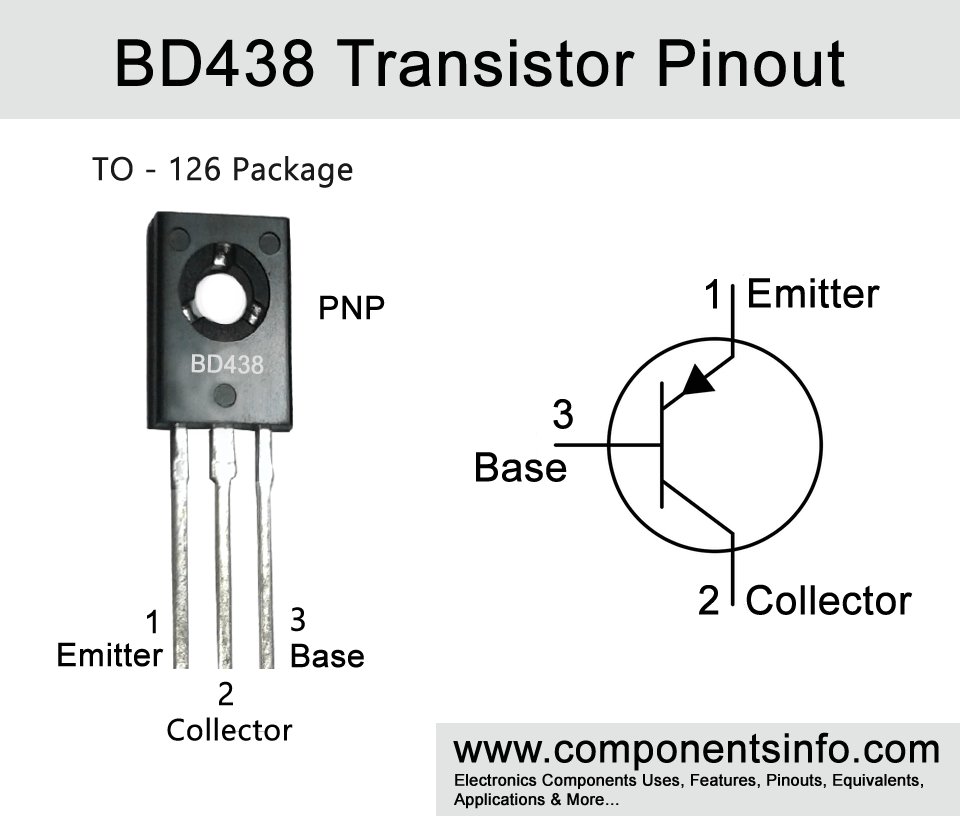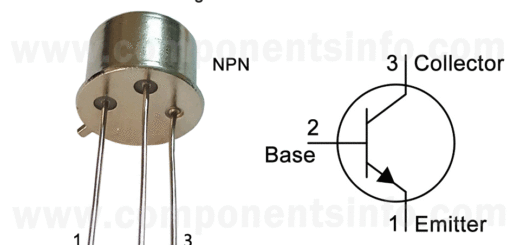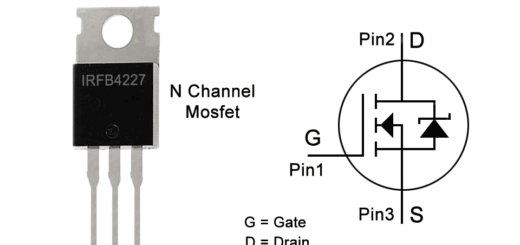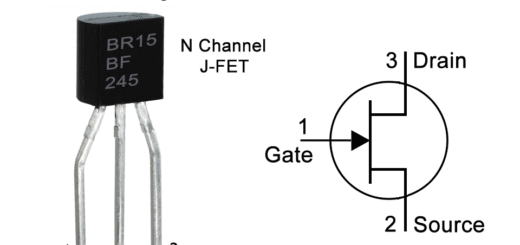BD438 Transistor Pinout, Features, Equivalent, Applications and Other Details
BD438 is another transistor from the BD43X series designed to use in amplifier and switching circuits. In this post we are going to explore BD438 transistor pinout, features, equivalent, applications and other details about this component.
Absolute Maximum Ratings:
- Package Type: TO-126
- Transistor Type: PNP
- Max Collector Current(IC): -4A
- Max Collector-Emitter Voltage (VCEO): -45V
- Max Collector-Base Voltage (VCBO): -45V
- Max Emitter-Base Voltage (VEBO): -5V
- Max Collector Power Dissipation (PC): 36W
- Max Transition Frequency (fT): 3 MHz
- Minimum & Maximum DC Current Gain (hFE): 40 – 130
- Max Storage & Operating temperature Should Be: -65 to +150 Centigrade
NPN Complementary:
The NPN complimentary of BD438 is BD437
Replacement and Equivalent:
BG438G, 2N4920, 2SB995, 2N4919, 2SB992, 2SB966, 2SB897, 2SB1373, 2SB1371, 2SB1347, 2SB1056
BD438 Transistor Explained / Description:
Most of the time we require a medium power PNP transistor for our electronic circuits or design which can drive medium power loads. If you are in same search then BD438 might be a good choice for your needs.
The transistor can drive load of upto -4A and the load voltage of upto -45V. It is designed to be used in switching and amplifier applications but can also be used in wide variety of other applications.
The transistor is available in TO-126 plastic package. Looking at the pinout of the transistor the first pin of the transistor is Emitter, second pin is Connector and the third pin is Base. It is the transistor of BD43X series which also contains other transistors such as BD434, BD436, BD440 and BD442.
Now understanding the absolute maximum ratings of BD438. The absolute maximum ratings are the maximum ratings of the transistor or we can also say it the maximum limits of the transistor on which the transistor can survive and above these ratings there is no guarantee that the transistor will be failed. So we always suggest to use the transistor a little bit below from its max ratings like at least 20% below.
So when we look at the absolute maximum ratings of BD438 we can see that its maximum limit for driving a load is -4A, max collector-emitter (or the maximum voltage to the load it can provide) -45V, its maximum collector-base voltage is -45V, emitter-baes voltage is -5V and maximum collector dissipation is 36W.
Where We Can Use it & How to Use:
BDX33C is designed to be used in switching and power linear applications but it is not only limited to these applications but can also be used in a wide variety of general purpose amplification, driver, and other applications.
To operate the transistor it is essential to know its pinout first and what are the requirements of the load you want to drive. After that connect the Emitter of the transistor with the negative supply of the circuit, then connect Base with the signal source of the circuit that you want to use as a switching signal or want to amplify that signal. Moreover, it is also important to use some passive components to build your amplifier circuit better.
Applications:
Switching Circuits
Audio Amplifiers
Pulse Generator
Motor Control
LED Drivers
Voltage Regulation
DC to DC Converters
Voltage inverters
Battery Operated Applications
Safe Operating Guidelines:
To safely operate the transistor follow these guidelines.
- One of the main thing to follow when it comes to safely operating the transistor is not to use it to its absolute maximum ratings. And stay 20% below from its max ratings.
- Now according to using it 20% below rule, the transistor’s max collector current is 10A so we will not drive load of more than 8A.
- And the maximum collector to emitter voltage is 100V so we will not drive the load of more than 80V.
- Moreover, the storage and operating temperature of the transistor should also be maintained between -55°C to 150°C but it will not be a problem because our atmospheric temperature will always stay between these limits but in situations when there are chances of your circuit to expose in extreme temperature conditions then you have to maintain the temperature of the transistor’s surroundings between these limits.
Datasheet:
To download the datasheet just copy and paste the below link in your browser.
https://datasheetspdf.com/pdf-down/B/D/4/BD438_FairchildSemiconductor.pdf



